In this blog, we will look at the sophisticated contact discretization method offered by Abaqus: surface-to-surface contact.
Surface-to-surface contact
The following example highlights the negative effects of poor mesh density selection for contacting parts.

Figure 1: example model
One method for reducing the negative effects of “incorrect” master-slave relationships is to use the surface-to-surface contact discretization method, illustrated in Figure 2.

Figure 2: surface-to-surface, master surface is smaller and has higher element density than the slave.
Discretization Method
The surface-to-surface contact discretization method uses the average slave node positions to enforce each contact. Each contact constraint is biased towards the closest slave node but will also consider other slave node positions. Figure 2 shows that this method can help to mitigate some issues associated with the node-to-surface discretization method. Figure 3 shows the same analysis but with the “correct” master-slave relationship.

Figure 3: surface-to-surface, the slave surface is smaller and has higher element density than the master. Edge loads not seen in Figure 1 are now apparent.
Figure 3 shows that the surface-to-surface method still benefits from the correct master-slave relationship, as high stress regions, in the form of edge loads, are now apparent at the edges of Part Two. These edge loads were not present in Figure 2, as in that configuration the master nodes at the corners could pass through the coarse slave mesh. Additionally, the correct master-slave relationship is likely to lead to a more efficient analysis, as a coarse slave can lead to longer processing times.
All of the previous examples
They have highlighted that the setup of interactions can have a dramatic effect on the stresses at contacts. In general, when contact stresses are of interest, try to abide by the following basic rules:- Ideally, the slave surface should belong to the smallest surface, with the highest element density and the softest body (considering both structure and material stiffness).
- If not all of the above can be achieved, it is more important to apply the slave to the smallest surface with the higher mesh density.
- If possible, more accurate results will be obtained by using the surface-to-surface contact discretization method over the node-to-surface method.
- The negative effects of inappropriate master–slave relationships are less important for the surface-to-surface interaction type; however, it is still preferable to apply the slave surface to the smaller surface with the higher element density.

 Advanced Simulation
Advanced Simulation

.gif?width=500&name=Adobe%20Express%20-%20Modeling%20Interference%20Fits%20Using%20Abaqus%20Explicit%20main%20image%20(big).gif)


 Engineering
Engineering

 PLM
PLM

 MBSE
MBSE